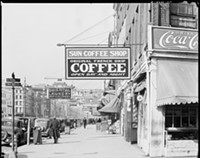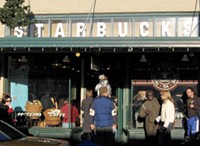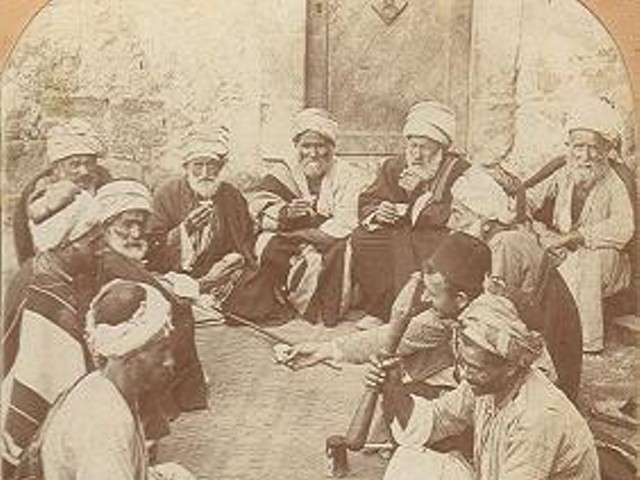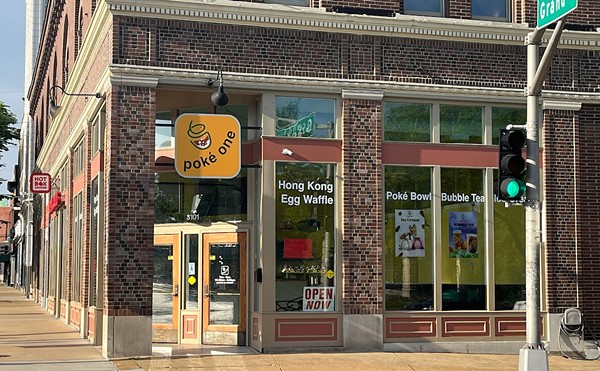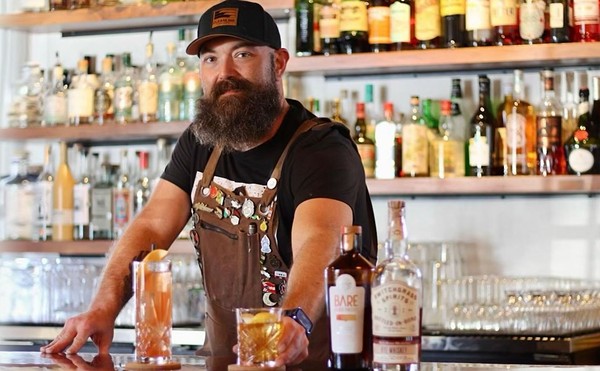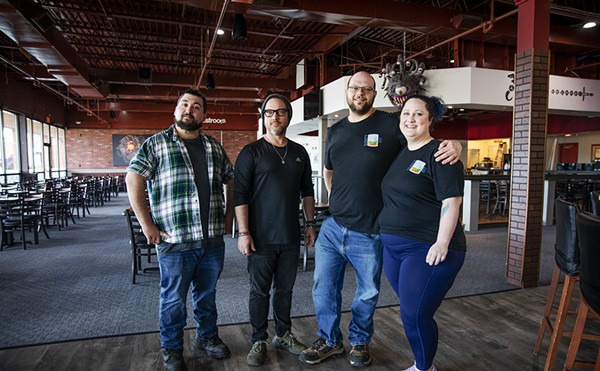Zach Dyer is a writer living in Saint Louis. He did his thesis research on coffee farmers in Southern Mexico. Since then, he has visited coffee plantations in Costa Rica and Mexico as well as roasters and cafés across the U.S. He blogs about coffee for Gut Check every Wednesday.
Last September, McDonald's started airing an ad in which bespectacled hipsters drink coffee in a Starbucks-inspired setting. Upon hearing that McDonald's now serves cappuccinos, the characters spontaneously admit -- oh, what a relief! -- that they were coffeehouse poseurs all along and shed their turtlenecks and interest in books for their true love, football.
On February 10, the Pew Research Center published a survey that pitted McDonald's and Starbucks drinkers against one another, drawing broad conclusions about each demographic's values and politics. Without a doubt, the McDonald's ad touches on the culture wars that were especially prevalent during the last election. Depending on your political leanings, you might have thought the McCain-Palin campaign was moonlighting for the fast-food giant.
Politics aside, though, the fact that McDonald's makes cappuccinos that actually look like cappuccinos -- unlike the infamous QuikTrip "cappuccino" of years past -- shows that coffee has come a long way in our food culture.
As McDonald's tears down the popular stereotype of the coffeehouse douchebag, the tension between mass-market appeal and specialty coffee is coming full circle. Believe it or not, it wasn't that long ago that coffee had a Joe six-pack image. (Or maybe that should be Joe double-shot?) So how did we arrive at this moment, when one of the culinary icons of the American working class has to aggressively re-brand itself as a specialty coffee chain?
The United States was always a consumer of coffee, but it wasn't until World War II that the U.S., specifically New York City, became an international hub for coffee. German U-Boats kept trans-Atlantic shipments of coffee from reaching London and other traditional European coffee capitals. By default, the U.S. assumed the seat as the largest consumer of South American coffee. Today, the United States drinks approximately one-fifth of the world's coffee.
Coffee became ubiquitous in the American workplace in the 1940s and 1950s. At the time, coffee was largely a bulk commodity with little emphasis on quality. While the older Great Depression and World War II generation continued to drink coffee, the Baby Boomers were leaning towards another beverage quickly coming into its own as a global commodity: soda.
In the war for the hearts and minds of a generation of beverage consumers, portability was soda's secret weapon. Coffee requires cups, beans, a coffee maker, maybe a grinder or filters, cream and "one sugar, or two?" Most importantly, coffee requires time. Soda is pop and go, the drink for busy young people.
Coffee was stuck in the past. If a new generation of drinkers was going to be cultivated, the industry needed a makeover. In an attempt to rescue the market, the Specialty Coffee Association of America was formed in 1982 and, with select micro-roasters across the U.S., began the gourmet coffee movement.
The goal was to save coffee by taking it places soda couldn't go: varietals; the introduction of "Arabica" to everyday English; shade-grown coffee, organic and fair trade coffee. When's the last time you heard of a soda that had a "good" year? Ever bought a soda because it was made at a certain elevation? The closest thing I've heard to a geographic preference with soda is that Coke tastes better in Mexico.
By taking coffee upscale it became a status symbol. Young professionals and others gravitated to it as a way to demonstrate that their success was allowing them to cultivate new tastes. Enter the coffee snob. What started as the passion of a core group of enthusiasts came to its eventual capitalist end: the mass-market phenomenon that is Starbucks.
Like it or not, Starbucks brought the specialty coffee movement to the everyday American. I once spoke with a barista who had owned a coffee house in Massachusetts. She complained that no one knew what a cappuccino was when her café was open. The year after she closed, however, a certain Seattle-based coffee company arrived and sent the town clamoring for lattes, espresso and macchiatos. People didn't try Starbucks and get into coffee out of pretension; they tried it out of the comfort and approachability that a corporate experience offers.
The success of coffee's re-invention and the meteoric rise of Starbucks forced national chains like McDonald's to reassess their core business and take coffee quality seriously. Indeed, fast food America has had to reinvent itself to meet this new coffee-driven consumer.
Coffee's journey has gone from work-a-day to gourmet and, perhaps with McDonald's entrance into the coffee market, back again. The difference this time is that quality coffee is a top concern, even for a fast-food giant. Regardless of where you buy your coffee, if you like turtlenecks or football, the rise of the coffeehouse snob helped push the rest of America towards a bolder, fresher cup of coffee.
Java Enabled: The Rise of Joe Double-Shot
[
{
"name": "GPT - Leaderboard - Inline - Content",
"component": "41932919",
"insertPoint": "5th",
"startingPoint": "3",
"requiredCountToDisplay": "3",
"maxInsertions": 100
}
]


